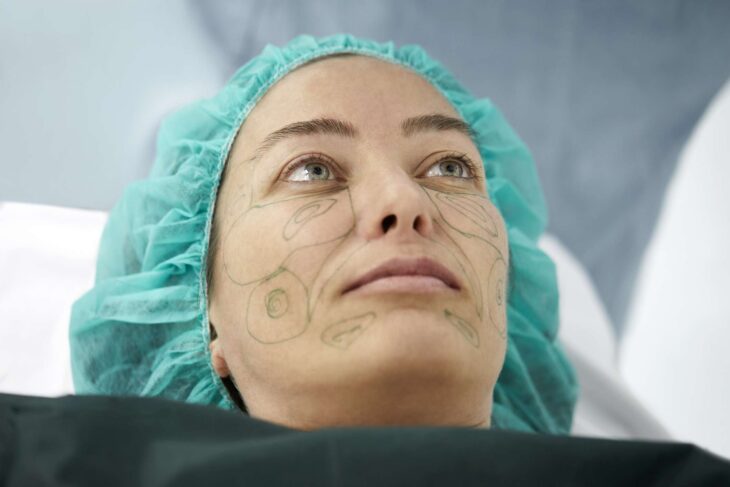The deep plane facelift is now the most popular type of facelift amongst patients in the United States and Australia. The improved and more long-lasting results, the shorter recovery time and the significantly less pain and bruising compared with other facelift techniques have all contributed to its popularity.
Some of the hype around this procedure in recent years has stemmed from the beautiful, long-lasting results from two Otolaryngology (ENT) Specialists who trained in facial plastic surgery that are based in the United States. Dr Andrew Jacono in New York and Dr Neil Gordon in Connecticut and both masters of the deep plane facelift technique and enjoy international recognition. Their success has grown through word-of-mouth spread over the years as a result of hundreds of happy patients who have shared their own experiences with friends and family.
Both Dr. Gordon and Dr. Jacono attribute their deep understanding of facial and neck anatomy to their otolaryngology (ENT) training background. They have regularly invited speakers at otolaryngology, plastic surgery, facial plastic surgery and cosmetic surgery conferences around the world. Both Dr. Jacono and Dr. Gordon enjoy teaching and allow other surgeons to attend their surgeries as observers to learn and improve their own results. They also produce surgical teaching videos. Dr. Jason Roth in Sydney, Australia is one of a small handful of otolaryngology trained facial plastic surgeons. He trained under Dr. Neil Gordon and offers the deep plane facelift technique to his Sydney patients. You can view his Deep Plane Facelift results here.

Source: Pinterest
The deep plane facelift lifts redundant soft tissue in the face and neck and elevates it in a very natural direction to where it would have been in earlier years. In doing so, it avoids the need for facial fat grafting or facial implants. Other types of facelift which do not adequately restore volume under the eyes or to the midface often need fat grafting or implants to obtain good results. This is almost never needed after a well-performed deep plane facelift.
A deep plane facelift does not require more than a small strip of skin (1-2cm) just in front of the ear to be separated from the deeper structures of the face. By not lifting the skin from the deeper structures this avoids a significant amount of bruising, swelling and post-operative discomfort. Instead, the deep plane lift follows a natural glide plane beneath a structure called the SMAS (superficial muscular aponeurotic system). Once in this correct plane, much of the procedure can be done by gentle finger pushing and dissection.
The SMAS layer is a relatively fibrous fatty layer in face. Sutures placed between the undersurface of the SMAS and the fascia in front of the ear lead to a facelift that is durable and long-lasting. Because the deep plane facelift SMAS flap is large, there is a large area under the SMAS where scar tissue can develop to adhere the face to its new position. This large plane contributes significantly to the duration of results.

Source: verywellhealth
One of the most important steps in the deep plane facelift procedure is the release of four ligament groups that tend to fixate and hold the face in its aged state. Once these ligaments are released, the face can be very gently repositioned into a more youthful position. Other facelift techniques that do not release these ligaments require the face to be pulled very tightly to try and stretch out and work against these ligaments. The deep plane facelift avoids this tight, overpulled look that also contributes to post-operative discomfort.
The four retaining ligaments that are released in a deep plane facelift are called the zygomatic, mandibular, masseteric and cervical ligaments. Understanding the position and importance of these ligaments requires a deep knowledge of facial and neck anatomy.
In comparison to a deep plane facelift, a SMAS facelift (high SMAS or low SMAS) raises a large skin flap over the SMAS layer. Only a very small cuff of SMAS tissue is raised and sutures need to be placed under significant tension to try and lift the deep facial tissues. Because the SMAS layer is still attached with ligaments, the sutures and the ligaments often pull in opposite directions. Often there is only so much these sutures can achieve and the results (particularly in younger patients) can be limited. Sometimes the lift is temporary and as the tissues re-descend (often within the first few months after surgery) they can pull the earlobes downwards giving them a “pixie ear” look. These issues are avoided through the deep plane facelift.

Source: drmarcells
The deep plane facelift surgery is usually done with a light general anesthesia or under sedation. The facial skin is also injected with local anesthesia to improve operative conditions and patient comfort. Two small drains are usually left in the neck overnight to drain any fluid and in most cases patients feel more than ready to return home the next day.
Most patients who have any loose skin along the jawline or looseness in the neck are candidates for the surgery. A dropped midface or hollowing under the eyes are other indications. The deep plane facelift is particularly useful in patients who have had prior facelift surgery. Sometimes patients who have not achieved the results they wanted through a mini-lift or SMAS lift will notice significant further benefit (and more natural results) after a deep plane facelift.
Most patients who have a deep plane facelift elect to have some kind of brow lift procedure at the same time. This allows the maximum benefit from the facelift and avoids any bunching of skin around the crow’s feet area in the temples. It also rejuvenates the upper eyelids, eyebrows and forehead at the same time.

Source: thebestdocs
If needed a deep plane facelift will also include dealing with any loose and redundant neck tissues. A small incision under the chin can be used to access loose platysma muscle that may be forming vertical platysmal bands. Often there is a pocket of fat under the chin or bulky digastric muscles that need to be removed or recontoured as well to improve the appearance of the neck and chin. Occasionally chin implants are also placed at the same time.
The incisions for the deep plane facelift are carefully positioned to be hidden in the contours of the ear or within or on the hairline. Their final position may vary slightly in male and female patients. One of the secrets to the excellent scars of this surgery is to suture the skin tissues under no tension. By appropriately lifting the deep tissues and releasing any retaining ligaments the skin should sit edge to edge at the incision site at the end of the surgery and almost not even need suturing.
The deep plane facelift is a very safe operation. Patient satisfaction rates are extremely high and complications are uncommon or rare. Like all surgery, there is a small risk of postoperative bleeding (slightly higher in male patients), infection and injury to other structures in the face such as the saliva glands and nerves. Nerve injuries are uncommon and are typically temporary with permanent injuries being exceptionally rare when the surgery is performed by surgeons who are appropriately trained.

Source: williamsfacialsurgery
Amongst both the scientific community as well as patient groups, the deep plane facelift is currently the most popular facelifting procedure. The results speak for themselves and for the most part the enthusiasm for this operation has grown through real patient outcomes and word of mouth referrals rather than any other type of marketing. We are fortunate that the pioneers of this procedure, as well as some of the world’s busiest deep plane facelift surgeons, are also great teachers, happy to share their techniques with other surgeons. For more information about deep plane facelift surgery, Dr Jason Roth in Sydney is an ENT Surgeon who specializes in facial plastic surgery and has performed hundreds of deep plane facelifts.
Understanding Deep Plane Facelift: A Double-Edged Sword?
The deep plane facelift, a surgical procedure aimed at revitalizing the lower face and neck, the most popular type of facelift, offers a plethora of advantages, yet it isn’t without its challenges. To gain a comprehensive understanding of this complex surgery, let’s dive into the pros and cons it presents.
Deep Plane Facelift: Uncovering the Pros
Age-Defying, Natural Results: What sets the deep plane facelift apart is its ability to deliver long-lasting, organic-looking results, a notch above traditional facelift methods. By addressing deeper facial layers — muscles and connective tissues — it offers substantial improvements for facial sagging, jowls, and neck laxity.
Artful Facial Sculpting: This technique allows for meticulous reshaping of facial tissues, enhancing facial contouring. It restores a youthful allure to the cheeks, jawline, and neck, making for a rejuvenated visage.
Refined Jawline and Neck Definition: The deep plane facelift specifically targets structures underpinning neck sagging and jowls, offering all-encompassing improvements in these areas. It effectively handles loose skin and excess fat deposits, leading to a more defined, sculpted appearance.
Inconspicuous Scarring: Thanks to strategically placed incisions along natural creases, this technique minimizes visible scarring. These incisions typically heal well, becoming less discernible over time.
Deep Plane Facelift: Acknowledging the Cons
Extended Recovery Phase: Recovery time for deep plane facelifts, compared to less invasive procedures, is generally more extensive. Temporary numbness, swelling, and bruising may persist for weeks post-surgery, necessitating diligent post-op care and adequate healing time.
Potential Risks and Complications: As is the case with any surgery, deep plane facelifts do present potential risks such as infection, bleeding, nerve damage, asymmetry, and less than ideal scarring, although these are relatively rare. Choosing a seasoned, skilled plastic surgeon is critical to mitigate these risks.
Increased Cost: Given the complexity of the deep plane facelift, specialized expertise is required, making it costlier than less invasive facelift techniques or non-surgical alternatives. Balancing this financial investment against the procedure’s potential benefits and long-lasting results is essential.
Selective Suitability: This procedure isn’t a one-size-fits-all solution. Factors such as overall health, skin laxity, and individual goals play a significant role in determining the procedure’s suitability. A skilled plastic surgeon’s assessment will guide you towards the most fitting treatment option.
